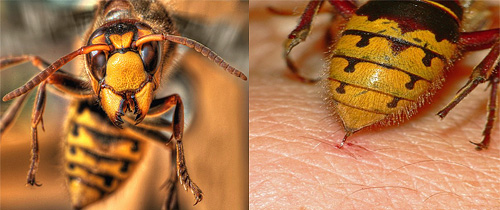
We can say that the hornet bite is one of the most dangerous among all domestic stinging insects. And in exotic tropical countries, the picture is not much different: the local hornets here also own the palm for fatal bites.

Immediately after the hornet has stung, the victim experiences, first of all, severe pain, then extensive swelling develops very quickly. In addition, for many people, a hornet bite (if qualified first aid does not arrive in time) can result in the development of a severe allergic reaction, sometimes ending in anaphylactic shock and even death.
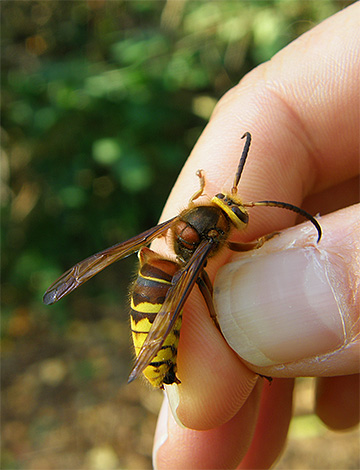
On a note
In Japan, about 40 people die every year from hornet stings. This is more than the number of deaths due to the attack of any other species of wild animals. A similar situation is observed in some provinces of China. According to doctors, the main causes of death due to a hornet bite are suffocation from laryngeal edema and kidney failure.
Indeed, in some rare cases, a hornet bite can be fatal to humans. Moreover, this is true not only for large tropical species of these insects, but also for ordinary European ones. That is why, if someone is bitten by a hornet at their summer cottage or during a picnic in nature, first aid must be provided without fail, and as soon as possible.
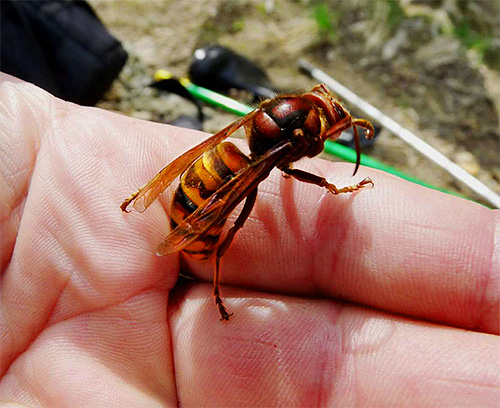
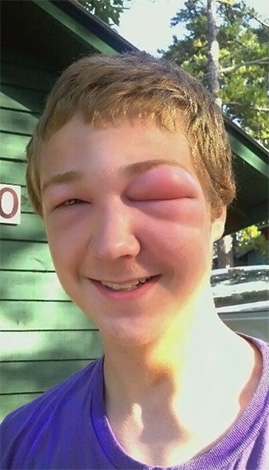
First steps: do not let the poison spread under the skin
So, let's look at what first aid should consist of and how to properly provide it to the victim.
First of all, after a hornet bite, you can try to suck out at least some amount of poison from the wound, but this should be done no more than 1 minute, since the skin at the site of the bite tightens very quickly, but there is simply no extra minute while helping the victim. Next, you need to apply a cold compress to the affected area as soon as possible, which will reduce the rate of spread of the poison, as well as the rate of development of tissue edema.
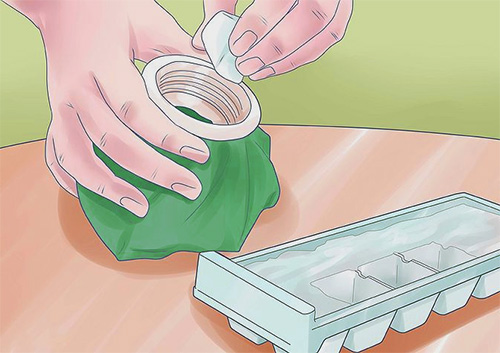

When providing first aid for a hornet sting, one important factor should be taken into account: this insect, unlike a bee, never leaves its sting in the skin. Therefore, you should not look for it and, moreover, try to squeeze it out of the wound.
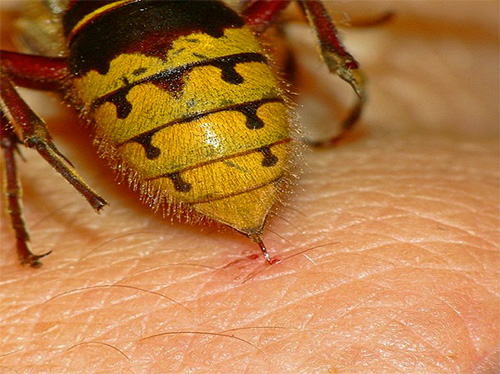
Among other things, it is not recommended to comb the bite site, rub it or put pressure on the wound - all these actions will only stimulate blood circulation and, as a result, more rapid spread of the poison through the tissues.
Ideally, first aid after a hornet bite should be given in the following order:
- the maximum poisonous content is sucked out of the wound;
- the bite site is treated with alcohol, a solution of potassium permanganate or hydrogen peroxide for disinfection;
- then wet sugar is applied to the affected area, which is covered on top with a cold towel or ice compress.
Sugar is needed in order to additionally draw on itself part of the poison located near the surface of the skin at the site of the bite. After 5-10 minutes, when it fulfills its function, it can be replaced with a swab dipped in vinegar or citric acid.

Since hornet venom has an alkaline environment, the acid that enters the wound partly neutralizes it. If these remedies are not at hand, you can attach a piece of an apple, a clove of onion or garlic, or a plantain leaf to the site of the hornet bite.
Review
“As a child, I was so used to bees in my father’s apiary that when a hornet bit me, I didn’t even worry. Well, swollen, well, okay. Then he felt that my eyes were closing, he began to call his wife, and she was in the house, she did not immediately hear. The eyelids were swollen so that I could not see anything, I started to feel sick. It became so scary that I crawled out of the garden on all fours. I did not crawl to the house, I lost consciousness. I came to myself already in the hospital, under a dropper. The doctors said that I had anaphylaxis, and very fast. Maybe it developed from bee stings. A week later, I was discharged from the hospital, they gave me an allergy passport, they said that if someone else ever stung me, I should immediately call an ambulance, otherwise they might not be able to take me to the hospital in time.
Artem, Ivanovo
When providing first aid to a person who has been bitten by a hornet, if possible, give him some antihistamine to drink: Diphenhydramine, Suprastin, or any similar to them. These medicines are needed to suppress the allergic reaction or to weaken its manifestation in the future.

All subsequent care and treatment after a hornet bite is determined by the severity of allergy symptoms.
Dealing with early symptoms
If, apart from swelling, itching and local pain, no other disorders are observed in the victim, then the treatment for a hornet bite may be minimal - these symptoms will go away on their own even without outside help in a few days. In most cases, it is sufficient to use, for example, an ointment for insect bites.
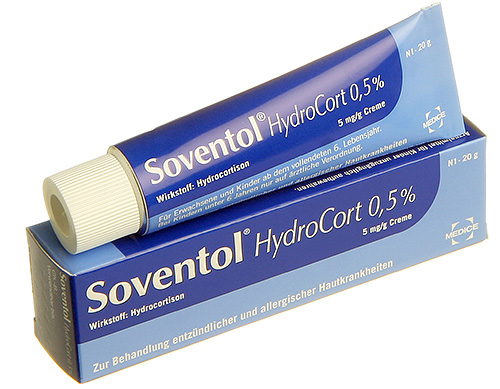
However, there are a number of signs of the development of a generalized allergic reaction that require prompt medical intervention:
- heat;
- increased heartbeat;
- labored breathing;
- extensive swelling;
- headache;
- severe nausea;
- preservation of the tumor at the site of the bite for more than three days.

If at least one of these symptoms appears, it is urgent to take appropriate measures, because a hornet bite can be fatal precisely because of an allergic reaction to it. In this case, you must call an ambulance or take the victim to the hospital yourself.
If the delivery of a person to a medical institution takes a long time, the victim of a hornet bite should be given glucocorticoid or antihistamines, which will have local anti-inflammatory and anti-allergic effects. In addition to the mentioned Suprastin and Dimedrol, these can be the following drugs:
- Prednisolone;
- Hydrocortisone;
- Dexamethasone;
- Loratadine.
These drugs block the further development of the allergic reaction and thus prevent the most severe symptoms from appearing.
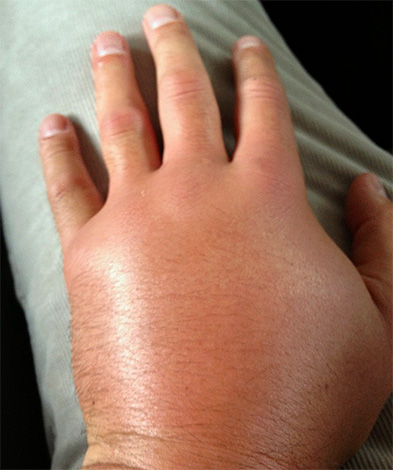
However, it must be remembered that all such drugs can cause serious side effects, so they should be used only when absolutely necessary, namely only as an emergency first aid.
If the symptoms of an allergic reaction do not increase ...
If the victim of a hornet bite is “lucky”, and of all the possible symptoms he has only pain, there are special balms and ointments to help him. Here are examples of some of them:
- Fenistil gel;
- Balm Insectline;
- Gardex Family;
- Soventol;
- Gel-balm Moskitol;
- Balm Picnic Family.

Another symptom that you can cope with on your own, without qualified help, is an increase in body temperature - but strictly not higher than 38 ° C. If the temperature does not rise, it is not necessary to bring it down.
The victim may also experience nausea. To alleviate this condition, you should not eat for some time, but drinking plenty of water will definitely help. In such a situation, you need to drink as much liquid as possible, preferably warm tea.
What to do with a severe allergy?
If the development of edema continues, bruises appear at the site of the bite or on other parts of the body, and the victim feels worse and worse, it is necessary to take him to the hospital as soon as possible. It must be borne in mind that such conditions, while not very alarming at first, are potentially fatal.
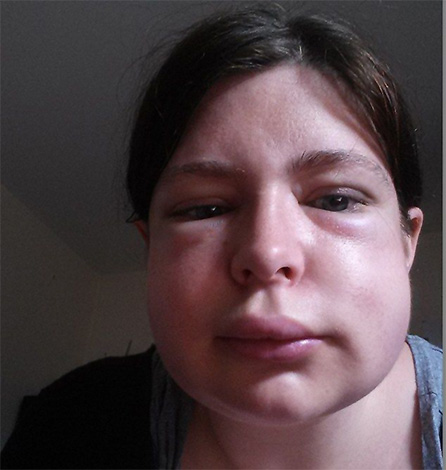
A person with severe allergic edema can only be transported in a supine position. In this case, the head should be slightly lowered relative to the body: it cannot be raised because of the risk of excessive outflow of blood (with subsequent loss of consciousness).
If you are far away from the hospital, and emergency care is needed, as they say, here and now, you can call the ambulance and, having described the situation and the symptoms, ask the doctors to instruct you by phone.
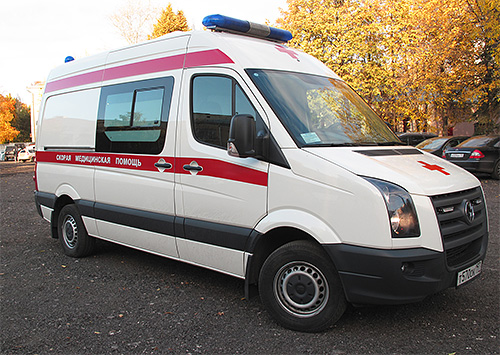
In severe cases, the victim of a bite to prevent swelling of the bronchi and larynx is usually given an injection of 0.2 ml of a 0.1% solution of adrenaline. Eufillin can also be used to improve airway patency.
With severe urticaria and Quincke's edema, up to 0.5 ml of a 0.1% solution of adrenaline can be additionally injected into the bite site, and 0.3 ml of a 0.15% solution of the same drug can be injected into the opposite part of the body. With the development of anaphylactic shock, this procedure is repeated.
In the most critical cases, when the victim of a hornet bite is not yet in the hospital, but breathing becomes almost impossible due to edema, the ligament between the cricoid and thyroid cartilages on the larynx is cut or pierced with a thick needle, and a hollow tube is inserted into the resulting hole, allowing the victim to breathe . No matter how scary it may be, such actions in an emergency are vital - without them, a hornet bite can become really deadly.
What exactly can not be done
To provide quality first aid, it is worth remembering some important limitations.
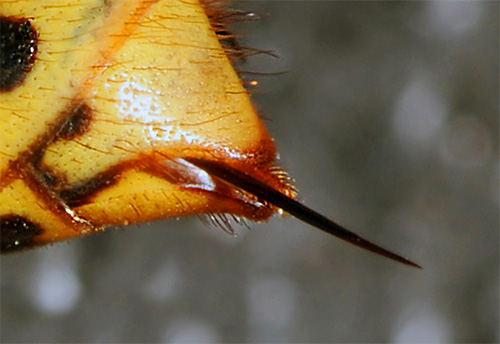
Firstly, when bitten by a hornet, it is strictly forbidden to drink alcohol: this will only cause a further increase in edema.
Secondly, it is impossible to use Diprazine as an antihistamine - this drug causes the body's own immune response.
And most importantly - in no case should you give up on all the symptoms and excuse yourself that this is just a wasp. It is these lovers of relying on “maybe” that are pulled out (and sometimes not) from the other world by resuscitators.
Therefore, if a hornet has bitten you or someone close to you, be extremely attentive to all the consequences and, just in case, immediately take care of having a telephone nearby so that you can call an ambulance if necessary.
Useful video about the danger of wasp and hornet stings for humans



